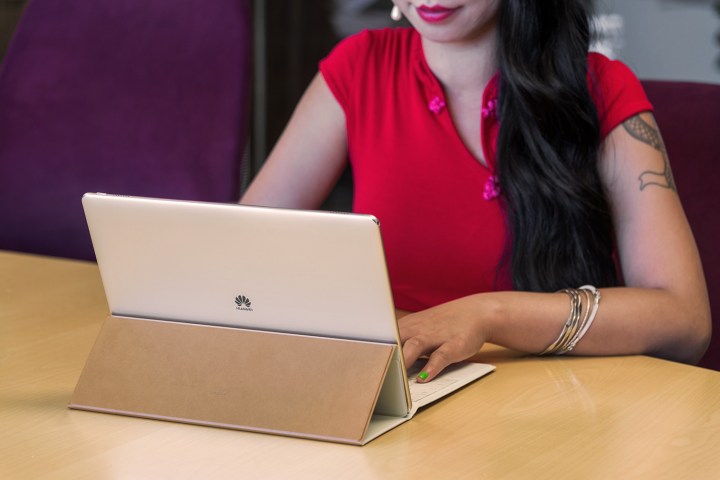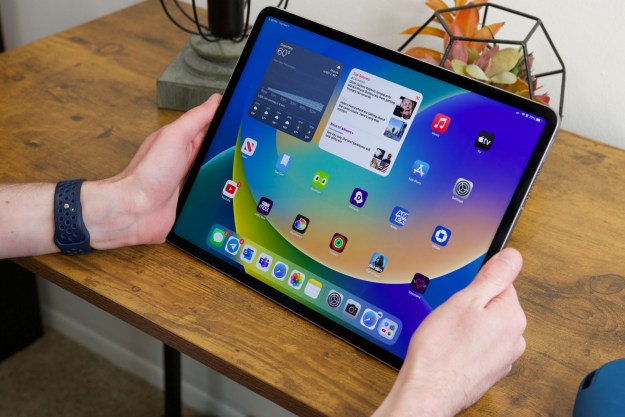
OEMs should consider ditching the fan, using MicroSD ports instead of full-sized ones, replacing USB Type-A with the smaller USB Type-C, and putting the circuit board in the middle of the tablet instead of on the sides, to save on internal cables.
All that could get things down to 0.27, but the current sweet spot, according to an Intel slide, is 0.31 to 0.37 inches.

A quick look at tablets we’ve recently reviewed suggests this is accurate:
- Acer Switch Alpha 12: 0.59 inches
- Surface Pro 4: 0.333 inches
- Lenovo ThinkPad X1 tablet: 0.33 inches
- Huawei Matebook: 0.27 inches
- iPad Pro: 0.27 inches
The Acer Switch Alpha 12 falls outside Intel’s sweet spot, and from experience we can tell you that it feels bulky. That tablet sports a Core i5 processors, and uses liquid cooling, which of necessity takes up more space. The Matebook, meanwhile, is super thin and light, but is a little short on power, especially considering the price point. Occupying the Goldilocks space outlined by Intel are the Surface Pro 4 and the ThinkPad X1. We feel like both these machines managed to offer a considerable amount of computing heft without sacrificing portability.

The goal, then, is for devices like these to eventually fit into the current form factor of the Matebook and the iPad Pro. A few of the suggestions outlined by Intel include:
- Switching to OLED displays, instead of cheaper, thicker LCDs
- Single-sided circuit boards
- Reduce I/O connectors, using USB-C instead
- Solder cards like Wi-Fi into place, instead of offering replaceable parts
What does this all mean for users? That tablets are going to get thinner, but possibly harder to repair. It’s a trade-off for sure, but for now it seems like one the market demands.
It will be interesting to see if more OEMs manage to hit 0.27 inches without compromising power, and we’ll let you know when that happens.
Editors' Recommendations
- Samsung’s newest Android tablet is a perfect iPad alternative
- Intel just launched the ‘world’s fastest’ CPU
- Intel’s CPUs just got way more confusing
- Intel may have accidentally leaked the release date for Windows 12
- I abandoned my iPad for an Android tablet and didn’t hate it


